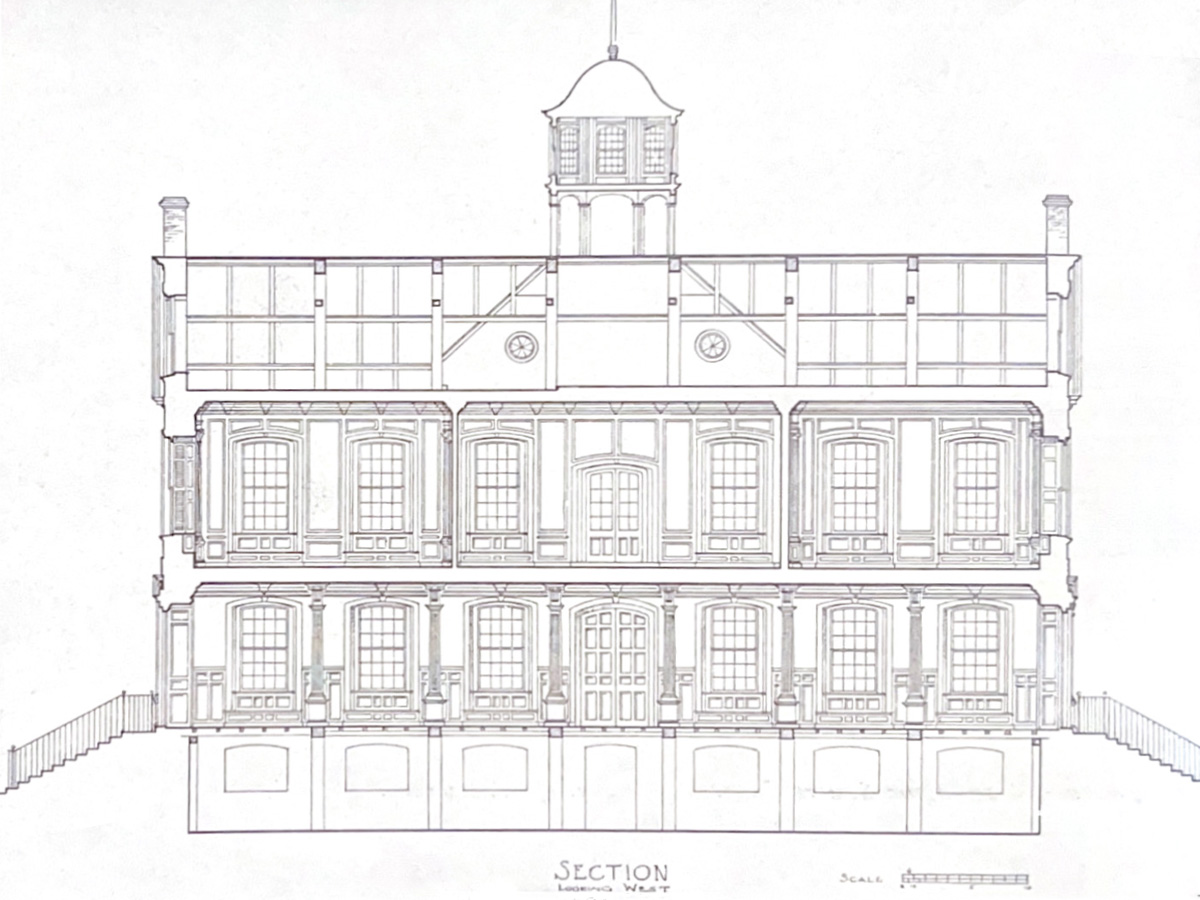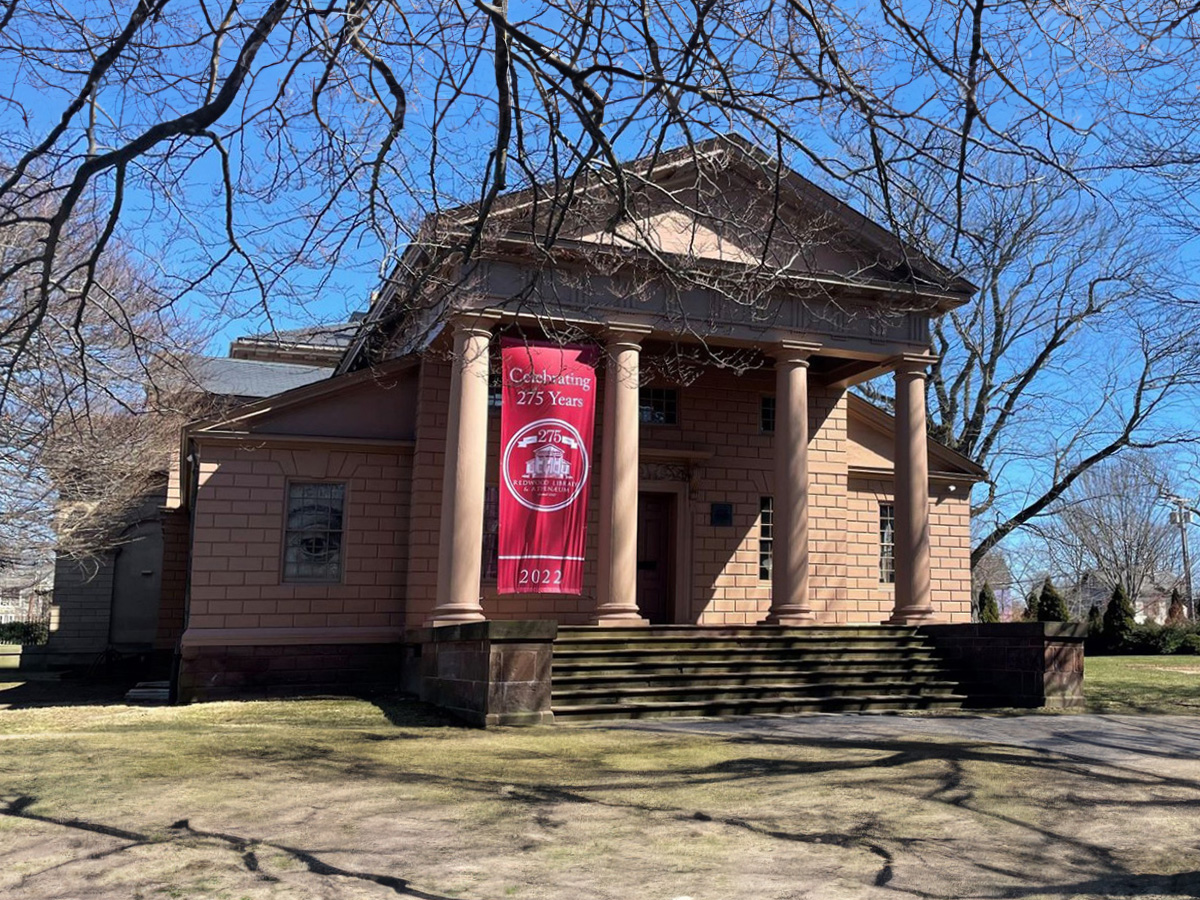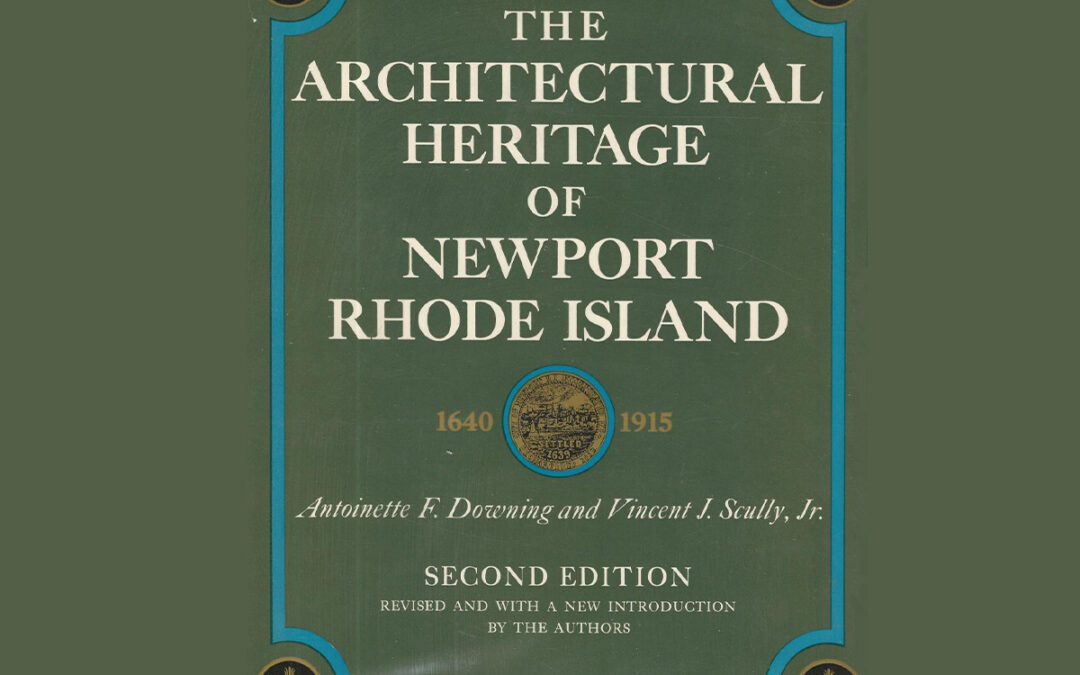The Cover of The Architectural Heritage of Newport, Rhode Island
In 1952, the book The Architectural Heritage of Newport, Rhode Island, 1640-1915, was published. It was a collaboration between eminent architectural historian Antoinette Downing and Yale art historian Vincent Scully. The book marked the first comprehensive study of Newport’s architecture and elevated the two authors to among the most influential American architectural historians of the 20th century. Furthermore, the book had a profound impact on the perception and preservation of Newport’s historic buildings in the decades following its publication, becoming a magnum opus.
Scully and Downing’s book was groundbreaking in several ways. Firstly, it was among the first books to focus on the architecture of a single city. Secondly, it placed Newport’s architecture within a broader American historical and cultural context. Thirdly, it argued that Newport’s architecture was not simply a reflection of the wealth and status of its residents but also a unique and meaningful expression of broader American culture.

Portrait of Vincent Scully
In 1952, when the book was published, Newport’s Gilded Age was fifty years earlier, and its Colonial Era was 175 years in the past. The city’s temporary importance as a naval port during the Second World War was fading into history. It was off the beaten path, far from the newly constructed highways accelerating the post-war growth of the American economy. No longer on the well-traveled marine route along the Atlantic coast pre-World War I, Newport had become a dusty and tired version of its once grand self. This isolation, in a way, helped preserve the older buildings, as Newport was neither so rich as to necessitate redevelopment nor so poor as to cause the older structures to deteriorate completely.

Portrait of Antoinette Downing
Scully and Downing’s work has had a lasting influence on Newport’s reputation among scholars. It is now recognized as one of the most important architectural centers in the United States, for both its Colonial Era and Gilded Age buildings, with its historic structures becoming a major tourist attraction and a source of pride for its residents. Scully and Downing’s philosophy of preservation was based on the belief that historic buildings should be preserved for their architectural and cultural significance. They argued that historic buildings are more than just physical structures; they are also repositories of history and memory. Scully and Downing also believed that historic buildings should be preserved in their original context, generally opposing the practice of moving historic buildings to new locations, as this often destroyed their sense of place.

Map of Newport, Rhode Island
The publication of Architectural Heritage has had a profound impact on Newport’s economy. The book raised public and academic awareness of the importance of Newport’s architectural heritage and greatly encouraged the preservation of many historic buildings that might otherwise have been demolished. It also helped attract new residents and businesses back to Newport, drawn by the city’s unique architectural character. Catherine Warren’s motion within the Preservation Society of Newport County, evolving it into the financial engine it is for the city today, tells the story of the recognition of the unique treasury of buildings highlighted by Downing and Scully in their book. Furthermore, Scully and Downing were directly involved in promoting the preservation of Newport’s historic buildings, serving on the board of directors of the Preservation Society of Newport County and playing an important role in the establishment of the Newport Restoration Foundation by heiress and philanthropist Doris Duke.

Colony House Front Section (Newport, Rhode Island)
It is important to note that the book has had a lasting effect not just on Newport, but on the field of architectural history. Through their close study of Newport, they helped establish how architecture becomes the repository of the culture, philosophy, technology and zeitgeist of the times and people who create it. Scully and Downing’s philosophy of preservation was based on the belief that historic buildings should be preserved for their architectural and cultural significance. They also believed from their study of Newport that historic buildings should be preserved in their original context. This idea has become much better accepted as a result of their writings.

Redwood Library (Newport, Rhode Island)
Through Professor Scully’s wildly popular survey course on American Architecture at Yale, he introduced the architecture of Newport to many thousands of students who took that love of architecture out into the world with them. These were not just art historians and architects, but also future CEOs, politicians, lawyers and community leaders of every sort and stripe. The Architectural Heritage of Newport Rhode Island reminded a business-minded America of the 1950’s that art and architecture mattered to history on a deep level and that the story of America had been recorded and preserved in the buildings of Newport, RI. It is a spotlight on that city that has remained ever since that time.
Ross Cann, RA, AIA, LEED AP, is an author, historian, teacher and practicing architect living and working in Newport, RI. He holds degrees in Architecture and Architectural History from Yale, Cambridge, and Columbia Universities.
